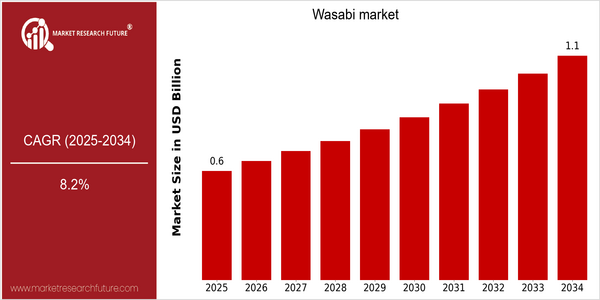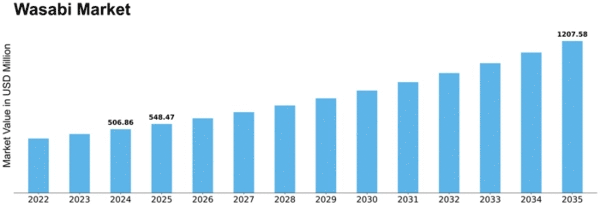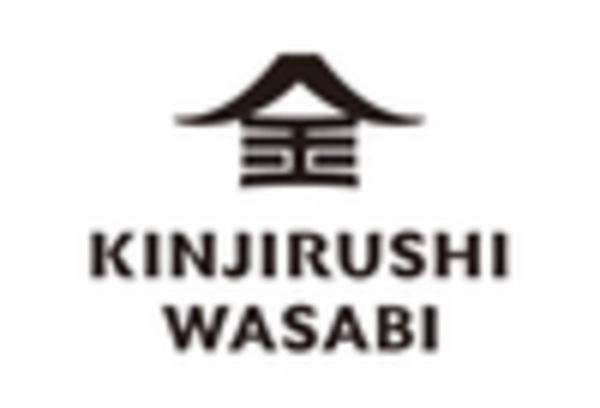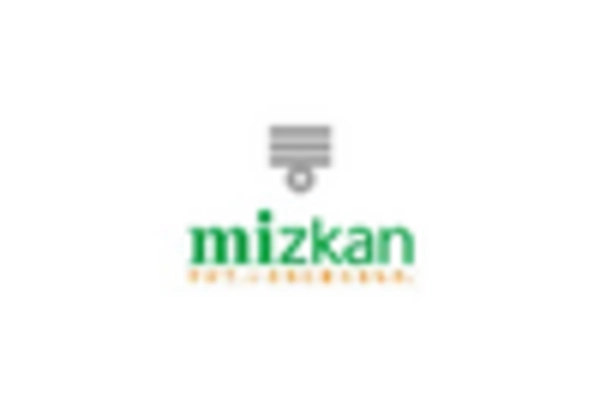Wasabi Size
Market Size Snapshot
| Year | Value |
|---|---|
| 2025 | USD 0.55 Billion |
| 2034 | USD 1.12 Billion |
| CAGR (2025-2034) | 8.2 % |
Note – Market size depicts the revenue generated over the financial year
The market for wasabi is expected to grow at a fast rate, from a value of $ 550,000 in 2025 to $ 1.1 billion in 2034. The annual increase in value is 8.2 percent, a significant CAGR. This growth is due to the popularity of wasabi, especially in the field of food and health. The number of consumers who are health conscious is growing, and the demand for natural and organic foods is on the rise. The uniqueness of the taste of wasabi and its supposed health benefits also make it a desirable product. The wasabi market is a result of many factors. Agricultural advances, such as hydroponics and controlled environment agriculture, have greatly increased the efficiency and yield of wasabi production. Also, the fusion cuisine and the addition of wasabi to a wide variety of food products, such as sauces, snacks, and drinks, have increased the demand for wasabi. The major players in the market, such as Pacific Farms and The Wasabi Company, have been active in strategic alliances and product development to meet the growing demand. This is expected to further stimulate the market, and wasabi is expected to continue to be a desirable ingredient in both traditional and modern cuisine.

Regional Market Size
Regional Deep Dive
Wasabi is characterized by the growing interest in Japanese cuisine and the increasing demand for unusual flavours in various food applications. In North America and Europe, the growing popularity of Asian fusion cuisine and sushi is driving the market. In Asia-Pacific, traditional consumption is still strong. The market is influenced by the availability of real wasabi and horseradish substitutes, the awareness of the health benefits of wasabi, and the need for sustainable cultivation. In the end, the wasabi market is growing as consumers are looking for authentic, high-quality products.
Europe
- European consumers are becoming more adventurous with their food choices, leading to a growing interest in wasabi-flavored products, including snacks and sauces, with companies like The Wasabi Company capitalizing on this trend.
- Regulatory changes in food labeling and authenticity standards are pushing manufacturers to ensure that their wasabi products are genuine, which is expected to enhance consumer trust and market growth.
Asia Pacific
- Japan remains the largest producer of authentic wasabi, with traditional farms in regions like Ibaraki Prefecture facing challenges from climate change, prompting initiatives to adopt sustainable farming practices.
- The increasing health consciousness among consumers in countries like South Korea and China is driving interest in wasabi for its potential health benefits, including anti-inflammatory properties and high antioxidant content.
Latin America
- In Latin America, the fusion of traditional cuisines with Asian flavors is gaining traction, leading to an increased interest in wasabi as a flavor enhancer in various dishes.
- Local agricultural initiatives are exploring the cultivation of wasabi in regions with suitable climates, aiming to reduce reliance on imports and promote local production.
North America
- The rise of sushi bars and Japanese restaurants has significantly increased the demand for authentic wasabi, leading to a surge in imports from Japan and local cultivation efforts by companies like Pacific Wasabi Farms.
- Innovations in wasabi cultivation techniques, such as hydroponics and controlled-environment agriculture, are being explored by startups like Wasabi Power, which aim to enhance yield and quality while reducing environmental impact.
Middle East And Africa
- The Middle East is witnessing a growing trend of incorporating wasabi into gourmet cuisine, with high-end restaurants experimenting with wasabi-infused dishes, which is expanding the market's reach.
- Local distributors are beginning to import wasabi products to cater to the rising demand among expatriates and food enthusiasts, with companies like Al Haramain Foods leading the charge.
Did You Know?
“Did you know that authentic wasabi is notoriously difficult to grow and can take up to two years to mature, making it one of the most expensive condiments in the world?” — The Wasabi Company
Segmental Market Size
Wasabi is a market segment that is growing at a steady pace, largely because of the growing interest of consumers in the unique taste and health benefits of wasabi. The increasing popularity of Japanese cuisine around the world and the rising awareness of the health benefits of wasabi are the main driving forces behind the growth of this market. Moreover, the growing trend for authenticity in food has prompted more restaurants and food manufacturers to include wasabi in their menus. At present, the use of wasabi is at a mature stage. For example, companies like Kikkoman and S&B Foods have established a strong presence in the retail and food service industries. The main applications of wasabi are as a condiment for sashimi and nigiri, in sauces and dressings. In addition, macro-level trends, such as the focus on clean label and sustainable production, are driving growth in this market. Also, the advancement of agricultural practices and food processing methods are improving the quality and availability of wasabi.
Future Outlook
The Wasabi Market is expected to grow at a CAGR of 8.2 per cent from 2025 to 2034. Wasabi is used as a flavoring in sauces, dressings, and snacks. Wasabi is a premium ingredient. The demand for premium and unique ingredients is expected to increase. In addition, the technological developments in wasabi production and processing are expected to play an important role in the market. The hydroponics and controlled environment farming are expected to increase the production efficiency and quality of wasabi and make it more available to consumers. Wasabi is a good source of vitamin C and has anti-inflammatory and antioxidant properties. The health benefits of wasabi are also expected to increase the demand for wasabi. The growth of the plant-based diet and the use of wasabi in health-conscious products are expected to contribute to the growth of the wasabi market.


















Leave a Comment